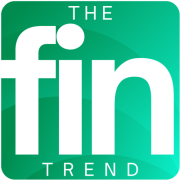Check it Out
Loan regulations in America are constantly evolving, with direct implications for consumers, finance, and the real estate market.

Below, we detail the main changes and what you need to know.
🏠 Increase in Mortgage Loan Limits
The Federal Housing Finance Agency (FHFA) has already announced an increase in conforming loan limits for 2025.
For the year, the new basic limit for single-family properties is $806,500, representing a 5.2% increase compared to the previous year.
There are high-cost areas where the amount can be higher, slightly above $1.2 million, allowing more loans to qualify for backing by Fannie Mae and Freddie Mac, potentially making homeownership more accessible amid high prices and still-elevated interest rates.
🎓 Resumption of Student Loan Collections in Default
The U.S. Department of Education has announced that starting May 5, 2025, it will resume the collection of federal student loans in default.
This change is expected to impact more than 5 million people, including the reinstatement of the Treasury Offset Program and the possibility of wage garnishment for those who fail to regularize their debts.
The collection pause had been in effect since the beginning of the COVID-19 pandemic in 2020. The decision aims to restore financial responsibility regarding payments.
However, it has sparked debate, mainly due to concerns about the financial impact on borrowers who are already struggling.
🛡️ Changes in Consumer Protections
Some regulations from the Consumer Financial Protection Bureau (CFPB) are being reviewed or revoked. Among the changes under consideration are
- Overdraft Fee Limits: A proposal to cap overdraft fees, which could save consumers $5 billion annually.
However, this cap is under threat of being revoked by Congress, and the next steps remain uncertain. - Regulation of Digital Payment Apps: Rules that would require companies like PayPal and CashApp to comply with banking compliance standards are being reconsidered.
- Removal of Medical Debt from Credit Reports: The rule excluding medical debts from credit reports is facing legal challenges, although it has some bipartisan and state-level support.
Additionally, the CFPB has dropped several lawsuits against major financial institutions, weakening consumer legal protections.
The reduction in federal oversight could lead states to play a more active role in protecting consumers.
🔍 Adjustments in Loan Limits and Appraisal Requirements
Regulatory agencies have announced adjustments in loan limits and appraisal requirements for 2025:
- Threshold for Appraisal Exemption in High-Cost Mortgages: The threshold for exemption has increased from $32,400 to $33,500, reflecting a 3.4% rise according to the Consumer Price Index for Urban Wage Earners and Clerical Workers (CPI-W).
- Thresholds for Consumer Credit Rules Application: Consumer credit transactions and leases up to $71,900 will be subject to the protections of Regulations Z (Truth in Lending) and M (Consumer Leasing).
Meanwhile, private student loans and loans secured by real estate will continue to be subject to Regulation Z, regardless of the amount.
⚖️ Adjustments in High-Cost Mortgage Rules
Effective January 1, 2025, the following adjustments have taken place for high-cost mortgages under the Truth in Lending Act:
- Total Loan Amount Threshold: Increased from $26,092 to $26,968 under the new 2025 rules.
- Points and Fees Threshold: Increased from $1,305 to $1,348, and close monitoring of regulations will be necessary.
🌞 New Rules for Home Improvement Financing
The CFPB has also finalized regulations to protect consumers financing home improvements, including solar panel installations and property tax assessments.
These rules aim to prevent deceptive practices by companies and vendors that promise unrealistic energy savings, ensuring that loans are affordable and transparent.
📊 Economic Impact and Outlook
The changes in loan regulations come against a complex economic backdrop.
The economic policies under the Trump administration, including global tariffs, have impacted Americans’ personal finances, increasing economic uncertainty and challenges in housing affordability.
Although gas prices have fallen due to increased global production, home prices remain high, and mortgage interest rates are still near 7%, making homeownership difficult.
In short, April 2025 brings significant changes to loan regulations in the U.S., with broad implications for consumers and financial institutions.
It is essential for individuals to stay informed and consult financial professionals to understand how these changes may affect their financial decisions.
